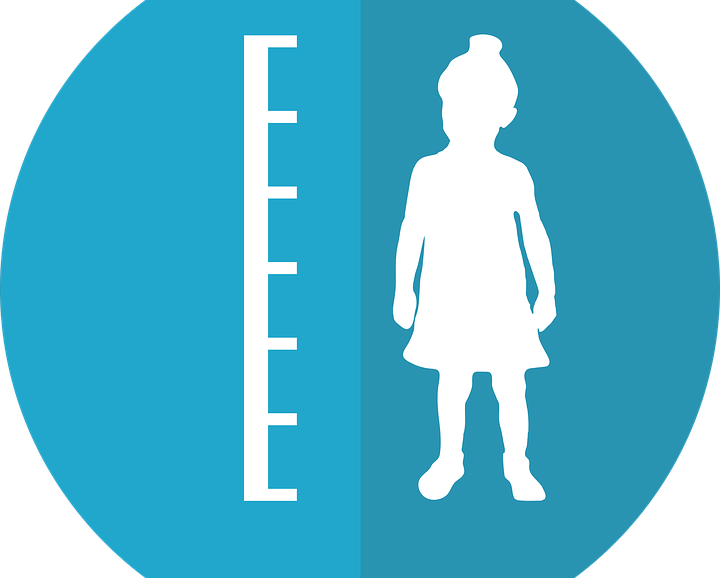Growth Chart: What Is It For?
In a child’s health record, the growth chart is a graphical scale that tracks the child’s height, weight, head circumference, and body mass index (BMI) as a function of age. This scale is different for girls and boys.
Here’s the lowdown.
Growth chart: what is it for?
Health professionals use the growth chart from birth to know if the child is growing normally.
It can be used to identify health or nutritional problems.
Good to know: growth monitoring and good nutrition are children’s first elements of health care.
Growth chart: measurements and frequency
Parameters
The growth chart allows you to monitor 4 parameters:
head circumference, i.e., the measurement of the head circumference (in other words, the head circumference);
weight;
height.
These last two parameters are monitored closely during the first months of life.
Frequency
The following are the recommended stages of growth monitoring:
within a week or two of birth;
at 2, 4, 6, 9, and 12 months of age (this is the first year of life when growth is most rapid);
at 18 and 24 months;
Once a year until after puberty.
This check is also done during acute care, as the disease can affect weight.
Average values
The child’s growth values may deviate from the average values while remaining within the norm.
[table]
Growth was considered about the same in girls and boys, then differentiated at puberty. But the new health records since 2018 establish different weight and height curves for boys and girls starting at ages 0-3.
The pubertal growth spurt starts earlier for girls.
Good to know: in adulthood, the height is about 165 cm for girls and 175 cm for boys.
Evolution of growth
After birth, the newborn loses weight, which is normal. He or she regains birth weight around the 10th day.
From then on, growth is rapid for the first few months of life, then slows down until puberty:
From birth to 3 months, the child gains about 25 g per day and 3 to 5 cm per month.
Between 3 and 6 months, his weight increases from 400 to 800 g.
From the 6th month onwards, his weight increases by 300 to 500 g.
In the first year, the infant gains about 20 cm.
After 2 years, growth slows down.
Between the age of 4 and puberty, the child gains an average of 2 kg and 6 cm per year.
At puberty, the child grows very fast again.
Please note: puberty starts on average at 11 years old for girls and 13 years old for boys.
Growth chart and child health
The measurements are noted in the health record. They are established from observing the child in good health from 0 to 20 years and allow for situating the child’s growth with the average of children of the same age.
By regularly plotting the curves, it is possible to observe that the child is in the average corridor of children the same age as him. It also allows for checking for a curve break or an abnormal growth acceleration.
We can then detect an abnormality of these curves during certain diseases. It is sometimes the first sign of:
a decrease in immunity;
cognitive disorders;
a delay in growth;
diabetes or obesity (in the case of overeating).
A break in the weight curve can reveal various problems (the repercussions of these disorders on the child’s height are later):
recurrent ENT or digestive infections;
a food intolerance;
a chronic or genetic disease;
sometimes, an emotional cause: psychosocial factors interfere with the child’s growth. An emotional deficiency can lead to a delay in growth. This stops when the living conditions return to normal.
It is, therefore, important to check that the child is growing in the normal range. It is not serious if he is slightly above or below average.
Main parameters of the growth curve

Height
Genetic factors influence the height of a child. Children of tall parents are likely to be tall, and children of short parents are likely to be short.
When the growth rate deviates from the norm, an X-ray of the wrist (determining bone age) estimates the child’s adult height.
The final height also depends on the age at which puberty begins. The earlier puberty starts, the smaller the child will be as an adult. If puberty begins late, the child will grow longer.
Please note: a consultation is necessary in case of pathological delay of puberty.
Growth depends on growth hormone (synthesized in the pituitary gland). The insufficiency or absence of this hormone causes short stature. A blood sample can be taken to check its presence. Treatment with growth hormone can be decided. It is highly regulated and carried out by a specialist.
Cranial perimeter
The cranial perimeter is also regularly monitored. Its measurement is recorded on the health record. Its increase is a sign of brain growth, which is rapid in the first two years, then slows down. Since 2018, the curves of head circumference between 0 and 5 years have been differentiated between boys and girls.
Note: a deviation of the curve up or down requires a brain scan.
BMI
The body mass index obtained is plotted on the body weight curve:
During the first year, the curve follows an ascending slope.
It decreases when the child starts to walk.
After 6 years, it goes up again, which is the rebound of adiposity. If it occurs before age 6, it indicates a risk of obesity, even if the child does not appear fat.
BMI monitoring allows for rapid correction of poor nutrition before obesity occurs, even if:
the role of genetics is much more predominant in children, and the effect of the environment is almost nil from the age of 9 years, and these genetic factors predominate throughout life, although their influence decreases with age;
Most children have no risk of becoming obese, whatever their diet or level of physical activity. As for obese children, they are programmed to be overweight.
Good to know: higher body mass indexes are associated with an increased risk of martial deficiency (iron deficiency anemia) in children aged one to three years.







